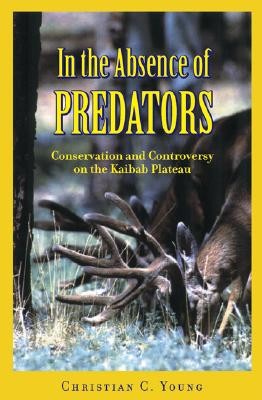
- We will send in 10–14 business days.
- Author: Christian C Young
- Publisher: University of Nebraska Press
- ISBN-10: 0803249160
- ISBN-13: 9780803249165
- Format: 16.4 x 23.8 x 2.7 cm, hardcover
- Language: English
- SAVE -10% with code: EXTRA
Reviews
Description
The wildlife management controversy over the deer on the Kaibab Plateau, north of the Grand Canyon, remains one of the best-known examples of nature's balance being upset by human efforts to protect a certain aspect of nature. The controversy involves an apparent deer population explosion and crash on the Kaibab Plateau in the 1920s, which was initially blamed on the removal of natural predators.
In the first comprehensive account of the Kaibab deer controversy, Christian C. Young describes the interactions, rivalries, and conflicts between state and federal agencies, scientists, nature lovers, conservationists, and hunters. Young blends a contextualized history of events with a new and more useful understanding about the promise of scientific knowledge in the face of factual uncertainty and public controversy.
Scientists and historians have used this case to illustrate the difficulties of controlling wild populations. Their message is typically one of failure, and the reason most often given centers on our lack of knowledge of the natural world. As such, the burden of failure seems to rest on scientists, who work diligently but always seem to offer too little too late in the way of practical advice. Since our knowledge of the natural world will always be incomplete, Young argues that our ability to investigate nature requires flexible and interactive management plans. He shows how earlier truths learned on the Kaibab came to be recognized as myths and offers a compelling lesson about how science and society interact within challenging contexts of disagreement.
EXTRA 10 % discount with code: EXTRA
The promotion ends in 19d.12:31:20
The discount code is valid when purchasing from 10 €. Discounts do not stack.
- Author: Christian C Young
- Publisher: University of Nebraska Press
- ISBN-10: 0803249160
- ISBN-13: 9780803249165
- Format: 16.4 x 23.8 x 2.7 cm, hardcover
- Language: English English
The wildlife management controversy over the deer on the Kaibab Plateau, north of the Grand Canyon, remains one of the best-known examples of nature's balance being upset by human efforts to protect a certain aspect of nature. The controversy involves an apparent deer population explosion and crash on the Kaibab Plateau in the 1920s, which was initially blamed on the removal of natural predators.
In the first comprehensive account of the Kaibab deer controversy, Christian C. Young describes the interactions, rivalries, and conflicts between state and federal agencies, scientists, nature lovers, conservationists, and hunters. Young blends a contextualized history of events with a new and more useful understanding about the promise of scientific knowledge in the face of factual uncertainty and public controversy.
Scientists and historians have used this case to illustrate the difficulties of controlling wild populations. Their message is typically one of failure, and the reason most often given centers on our lack of knowledge of the natural world. As such, the burden of failure seems to rest on scientists, who work diligently but always seem to offer too little too late in the way of practical advice. Since our knowledge of the natural world will always be incomplete, Young argues that our ability to investigate nature requires flexible and interactive management plans. He shows how earlier truths learned on the Kaibab came to be recognized as myths and offers a compelling lesson about how science and society interact within challenging contexts of disagreement.


Reviews